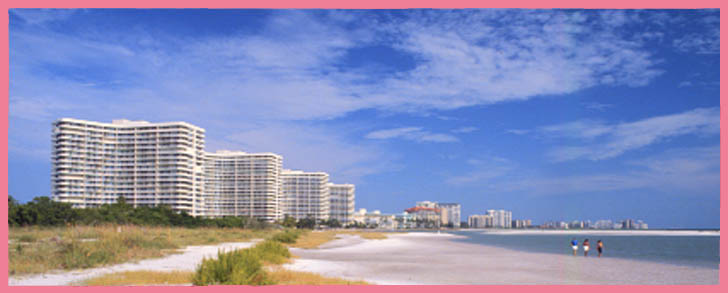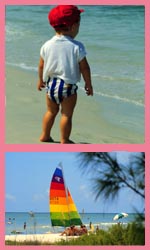|
Marco Island, Florida
Eew - It's an Eel!
by Maureen Sullivan-Hartung
According to my trusty expert, Renee Wilson, the Coastal Training Specialist at the Rookery Bay National Estuarine Research Center, here in Naples, there are indeed eels in our estuaries and on our near-shore reefs. She has also shared with us that there are several species of moray eel found in this area, as well as even a few conger and worm eel species. Oftentimes these eels are mistaken as snakes; however, fear not, as there are no sea snakes in Florida. Fortunately for the eel, it is this fear and prejudice against snakes here in North America that has prevented the eel from becoming a popular dish at the dinner table.
Eels are elongated fishes, consisting of approximately 800 species, that range in size from 2 centimeters possessed by the one-jawed eel and up to the 13-foot giant moray eel. Their weight can range from a mere 30 grams to well over 25 kilograms. Living mostly in the shallow waters of the ocean (gulf), they burrow into the sand and mud or in cracks found in the coral reefs. Since most are nocturnal, they are rarely seen. Only members of the Anguillidae family, one of the four suborders of eels, regularly inhabit fresh water, but they too return to the sea to breed. Generally, males remain in the brackish estuaries near the coast, while the females move farther upstream.
Conger eels are actually among the most common fishes, seeking out homes from our local habitats that include shallow tidal pools to the ocean depths. Moray eels are usually viewed on nature shows and are frequently seen around reefs by divers. Being near-sighted, they give the appearance, with that gaping mouth filled with wicked-looking teeth, that they are ready to lash out at anyone who dares to get too close and disturb them. The worm eels look just like real worms.
Eels have developed an unusual feeding process with food that cannot be readily broken into pieces by jerking or pulling or even consumed whole, due to their weak jaws and small teeth. The eels spin their bodies, while holding onto the food with their mouths, and they have been recorded to spin anywhere between six to 14 spins per second. Surprisingly, did you know that Olympic skaters can only spin five times per second!
Eels have certainly been around a long time - as far back as the Calusa Indians of Southwest Florida. The Calusa, meaning fierce people, opted to fish for their food as opposed to farming, like other tribes did successfully. Living along the coasts and inner waterways, the Calusa built their homes on stilts and wove Palmetto leaves for their roofs. In addition to catching fish in their palm tree webbing nets, they used home made spears to catch eels.
For those of you not wanting to actually get into our local waters, feel free to check out the eels at the Rookery Bay National Estuarine Research Reserve on the east side of town, on the way to Marco Island; or, at the Imaginarium, an impressive hands-on museum and aquarium that houses eels and more marine life in their aquariums in Fort Myers. In both locations you can get up close and personal - without getting wet!
Additional Reading:
Eels: An Exploration, from New Zealand to the Sargasso, of the World's Most Mysterious Fish by James Prosek, 2010
Consider the Eel: A Natural & Gastronomic History by Richard Schweid, 2004
The Eel by Frederich Witesch, 2003
Florida's Fabulous Fishes by Gary Cochran, 2003
The ABCs of the Florida Landscape is written by freelance writer Maureen Sullivan-Hartung who has resided in Naples for nearly 30 years and loves learning about all aspects of the local flora and fauna. Another passion of hers is local history and she authored a book in November 2010, titled, Hidden History of Everglades City & Points Nearby, published by The History Press in South Carolina. Check her website for the book's availability and/or additional information about the author at:
www.maureenwrites.com
msh52011
For more ABCs of the Florida Landscape - Click Here
|


